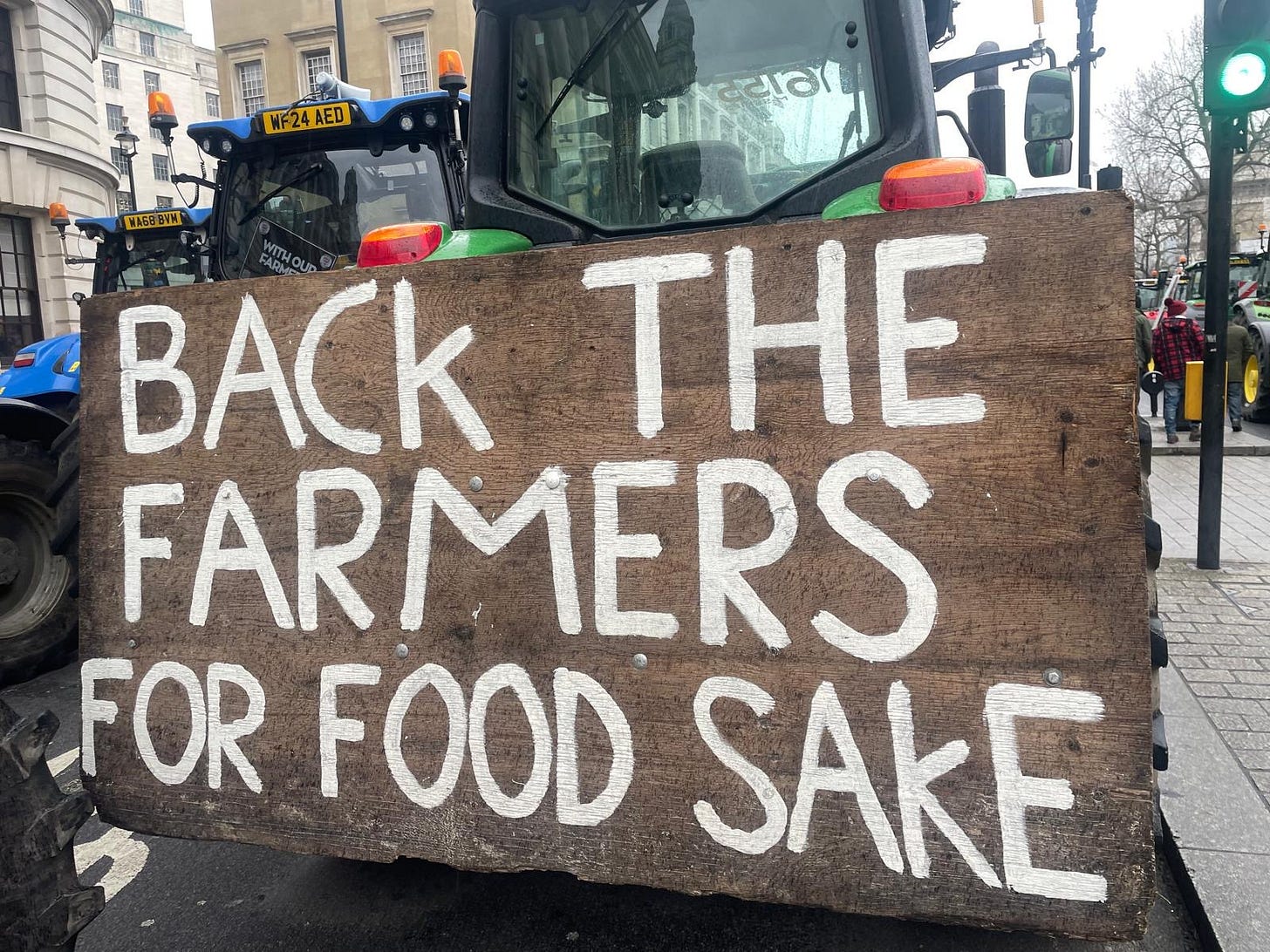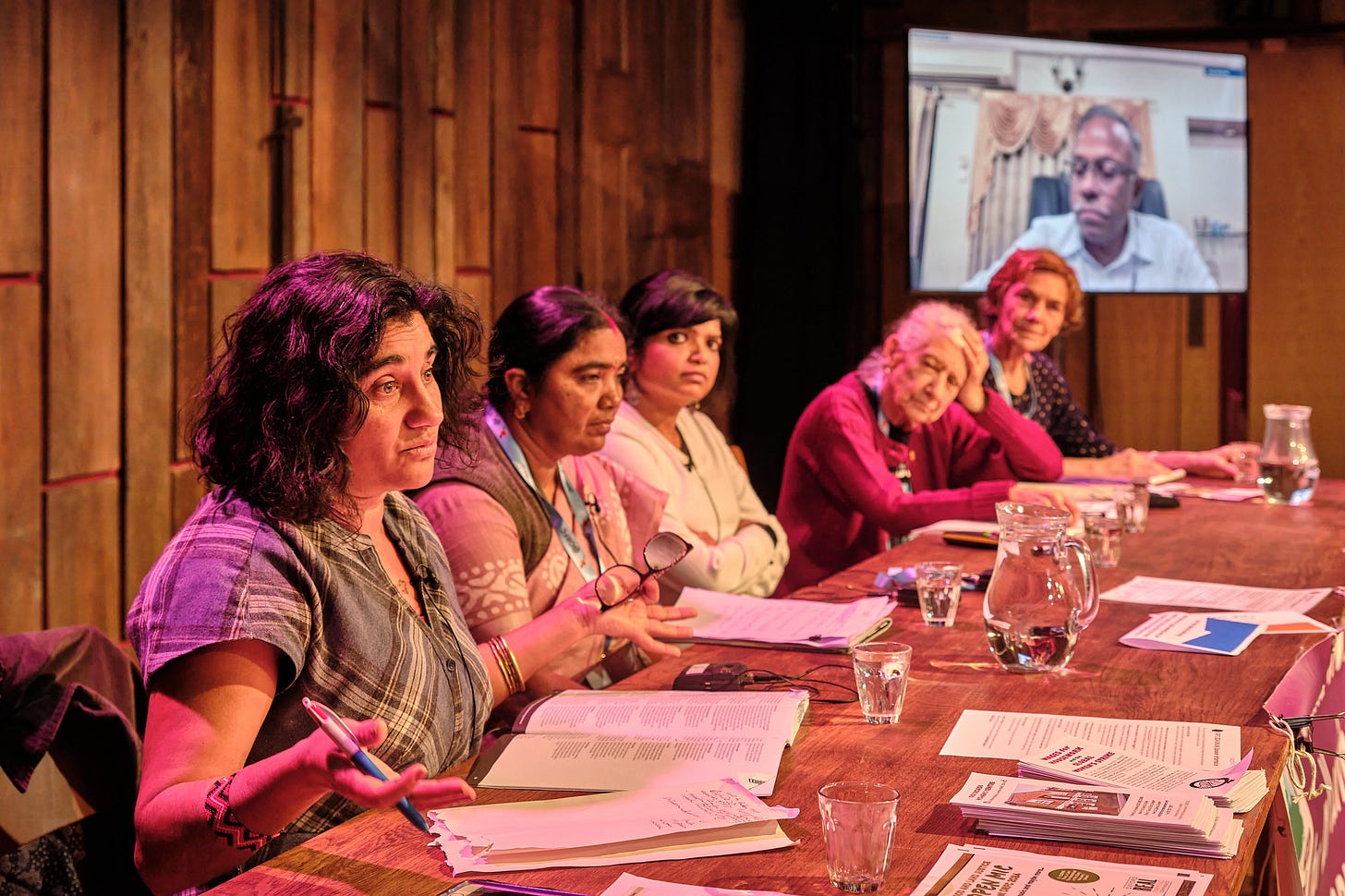Farming Without Borders
A Global Language for Sustainable Farming
This post is part of my “Future of Farming” series, where I dig into the future of agriculture, food security, and policy. If you’re new here, catch up on the rest of the series:
Feel free to explore each one for a deeper look at where farming is headed!
If there’s one thing I’ve learned since starting my Substack, it’s that the boundaries we draw on a map mean little to the land beneath our feet. Whether you’re farming in Hampshire, the American Midwest, or rural India, the fight is the same: survival. The specifics are unique, but the struggle is deeply linked across the world.

A Universal Battle for Survival
Since opening up about my own journey, I’ve had conversations with farmers from all over-Maine, Kentucky, the Midwest, and beyond. What stands out is how similar our struggles are, even if the details differ. As I wrote in a recent post:
“We talk a lot about regenerative agriculture — but the real focus should be on regenerating. Not labels. Not certifications. Just one question:
Is your land getting better?
More water held in the soil.
More biodiversity.
More sunlight captured.
More life.
That’s what matters. It’s not about being ‘regenerative.’
It’s about regenerating — every season, every year.”
That post sparked a conversation that’s stuck with me. Liz Reitzig, a US farmer and food advocate, responded:
“Are people getting paid fair value (that doesn’t always mean money) for the work they are contributing? … Ultimately, part of regenerating is growing forward. Can the next generation continue? Sadly, here in the States, there’s quite a bit of exploitation of humans that I’ve seen on this ‘movement’ which means it can’t continue and then it won’t.”
She’s right. Here in the UK, we’ve felt the pain too. After Brexit, the loss of seasonal workers hit hard, and the issue of fair treatment for those who do come has become even more urgent. Groups like Justice Is Not Seasonal are pushing for better protections and recognition for migrant farm workers, because without justice for people, there can’t be true regeneration. And it’s not just migrant labour-many UK farmers are on Universal Credit, our welfare system. How can we talk about a regenerative future when the people growing our food can’t even afford to keep doing it?
Movements like the Landworkers’ Alliance and Basic Income for Farmers are working hard to change this, lobbying for a fairer, more resilient food system. But as Liz said, it’s a knot we have to keep pulling at, and the human side of farming often gets overlooked in the soil-first narrative.
The Fight Is Survival, Everywhere
What’s become impossible to ignore is that we’re all fighting a battle for survival. Each country’s challenges are unique-climate, policy, economics, even the crops we grow-but the underlying struggle is deeply linked. Whether it’s drought in California, labour shortages in Britain, or market volatility in Africa, the question is the same: can we keep farming, and can our communities survive?
Last week on a LIVE with Liz, we circled around the question: “Can regenerative farming survive in a capitalist society?” We digressed (as you do), but the truth is, the answer is simple and urgent: we need our farmers-everywhere. If we lose them, we lose everything: food security, rural economies, and the possibility of regeneration itself.
‘You Won’t Find These Stories Between the Sun-Flared Tractor Photos…’
One of the things I love about Substack is the global community we’ve built here. Sam(antha) M. Burns, a small-scale farmer in Maine, wrote:
“One of the things I love about Substack is the global community we have here. Following farmers like Adam T Kuznia who farms in the American mid-west and Helen Freeman farming in the UK gives me a better understanding of the issues farmers like myself (small-scale farming in Maine) are facing world wide.
It’s really opened my eyes to the perilous state of food systems everywhere—all under attack from the threat of an industrialized and corporatized agricultural system.
On the one hand it’s nice to know I’m not alone in the fight for real and healthy foods. But on the other it’s terrifying to discover we’re so close to the brink…”
And Adam T Kuznia himself wrote:
“You won't find these stories between the sun-flared tractor photos and corporate success stories on Instagram. Can’t hashtag generational trauma. Can't filter the kind of truth that smells like rust and broken dreams.”
We’re all fighting battles nobody sees. Farming carries generations of trauma that don’t fit neatly into a social media post. Let’s not do it alone anymore. Speak up, lean on each other, and thank a farmer if you can, they go through more than you’d ever guess just to put food on our tables day after day.
The SFT & Global Farm Metric: A Shared Language for Change
So how do we move forward, together? This is where the work of the Sustainable Food Trust (SFT) and the Global Farm Metric (GFM) comes in-and why it matters more than ever.
The SFT has long argued that the real costs of how we produce food-on our soils, our health, and our communities-are hidden and ignored. Their “true cost accounting” work, and now the Global Farm Metric, are attempts to change that by giving us a common, holistic way to measure what really matters.
The GFM Trials Report 2025 isn’t just another checklist. It’s a framework that’s been tested on over 240 farms across 23 countries, covering everything from soil and water to biodiversity, economics, and community. It asks all of us, farmers, policymakers, eaters, to look at the whole system, not just one part. And crucially, it’s adaptable: whether you’re counting earthworms in Hampshire or termites in the Amazon, it helps you track progress and share learning.
The report’s findings are clear:
The GFM “kickstarted sustainability conversations and aligned stakeholders through shared understanding and common goals.”
Farmers valued the holistic nature of the framework, saying it “revealed areas of my farming practices that I hadn’t previously considered, highlighting the importance of a comprehensive approach to sustainability.”
The framework is globally relevant, but local adaptation is key—what matters is not just the data, but the story and context behind it.
As one Kentucky farmer put it:
“Participating in this programme improved my confidence as a solo operator, because I got data and validation. It’s motivated me to do things I’d been wanting to do but wasn’t sure whether it would be worthwhile.”
The GFM also highlights the need for more support-financial, technical, and emotional-for farmers to make meaningful change. The trials showed that advisor support, practical tools, and peer networks all made a difference in helping farmers complete assessments and act on the results. But they also revealed the limits: cost, complexity, and time are real barriers, especially for small and mid-sized farms.
Farmer Protests: The World Is Watching
This year alone, we’ve seen farmer protests erupt across France, Germany, the Netherlands, the UK, and India. The triggers are different diesel subsidies, nitrogen rules, cheap imports, or demands for fair prices but the root causes are shared: economic pressure, policy shifts, regulatory overload, and a market that often undervalues those who feed us.
If you want to dig deeper, check out these explainers:
CNN: Farmers' protests have erupted across Europe. Here's why
DW: EU farmer protests: What's driving tractors to the streets?
Time Magazine: What to Know About the Farmer Protests in Europe
Reuters: Why are farmers protesting in Europe, what do they want?
What’s striking is the solidarity emerging across borders. Whether it’s the Dutch Farmer–Citizen Movement (BBB) forcing policy shifts, or Indian farmers demanding legal minimum prices, or the UK’s own protests over post-Brexit subsidy changes and cheap imports the message is clear: farmers everywhere are saying, “enough.”
The Human Cost: Mental Health and Economic Pressure
Behind the headlines, the toll is personal. Bankruptcies are rising. Suicide rates among farmers in the UK and US are well above the national average. The pressure to keep going, to adapt to new rules, to compete with cheap imports, is relentless. Thankfully, support networks like The Farming Community Network, RABI, YANA, and Farm Aid are stepping up, but the need for help keeps growing.
Regenerative Farming & Capitalism: Can They Coexist?
Some regenerative farms are finding ways to thrive through direct sales, CSAs, or premium branding. Others struggle, especially without targeted subsidies or reliable markets. Innovative policies are emerging, from co-op models and ecosystem service payments in France and New Zealand, to India’s push for guaranteed minimum prices. But the reality is, the system is stacked against small and mid-sized farms, and the risk to food security is real.
Food Security: The Bigger Picture
Food insecurity is rising in both developed and developing countries. In the UK, US, and EU, food bank usage is up; globally, climate shocks and conflict are pushing millions closer to hunger. As small farms disappear, local food resilience weakens and reliance on imports grows. The stakes couldn’t be higher.
Solidarity Beyond Borders
What gives me hope is the solidarity I see emerging. Global movements like La Via Campesina, and regional alliances, are connecting farmers across continents-sharing knowledge, advocating for change, and standing together in protest. Consumer support is growing too, from “Buy British” campaigns to the surge in farmers’ markets and CSAs. People are waking up to the crisis, and they want to support real food, grown by real people.
Governments Respond—But Is It Enough?
Governments are reacting, if unevenly. Italy has banned lab-grown meat and is protecting farmland from solar panels to defend its food heritage. The Dutch Farmer–Citizen Movement (BBB) has forced policy shifts after massive protests. In the UK, subsidy reform and trade debates are ongoing. France’s CAP reforms, India’s MSP framework, and New Zealand’s soil health payments offer models for change but we need more, and faster.
British Farming: Proud, But Not Perfect
I’m a proud advocate for British farming, but I don’t think we’re perfect. There’s so much we can learn from our global peers about resilience, about solidarity, and about holding onto what matters most. The Global Farm Metric shows that while the context may change, the core challenges and the core values are the same.
The Path Forward: Regenerating, Together
So, what does the future of farming look like? For me, it’s about regenerating-land, people, and hope-season after season, year after year. It’s about building a food system that’s fair, resilient, and truly sustainable, not just for one country, but for everyone.
The Global Farm Metric isn’t a silver bullet, but it’s a powerful starting point. It gives us a shared language and a way to measure what matters so we can hold ourselves, and each other, accountable.
If you’re a farmer, a policymaker, or just someone who cares about where your food comes from, I invite you to join this conversation. Let’s keep pulling at the knots, sharing stories, and pushing for a food system that nourishes us all.
Because farming without borders isn’t just an idea-it’s the only way forward.
Join the Community
If you’ve enjoyed this post and want to keep up with the latest on food security, grazing livestock, and the future of farming, I’d love for you to join my newsletter community!
Subscribe for free to get regular updates, stories, and practical insights delivered straight to your inbox.
Or become a paid subscriber to directly support independent, farmer-led writing.
Every subscriber helps keep these conversations going and supports the future of authentic, on-the-ground agricultural storytelling.






I'm deeply skeptical of efforts to account for the "real cost" of regenerative farming by increasing the price of regeneratively farmed goods. I think they are misguided, which feels like a weird thing to say. It's a new perspective to me, and I'm still adjusting to it. But here's my most direct argument for this case: If we reward farms that engage in regenerative farming with higher price premiums for their products, then these products become more expensive (obviously). This means they will always be luxury goods. The person that can't afford rent is never going to choose them. If we want a society of regenerative farms, we need the food of the poorest person to be regeneratively grown. How can we achieve this? I think there needs to be an "exploitation" tax put on foods farmed intensively and at scale. There needs to be punishment in the market for exploitation to reclaim the margin gained by that exploitation. I'm honestly not sure if monetary policy can solve this problem because I see the monetization of our relationships as a key mechanism for maintaining exploitation.
"We’re all fighting battles nobody sees. Farming carries generations of trauma that don’t fit neatly into a social media post." - Helen Freeman.
Everyone should read the Unsettling of America by Wendell Berry. Many of you already have.
And read this at least twice: 'I think part of what we are all feeling (and I have a lot of trouble fully articulating) is how entangled food is with commerce/"the economy" now.' - Liz Reitzig.
We can't have it both ways. If you want to everything to be convenient and shop at Walmart for everything you need, farming becomes inextricably linked to to big business. Only when people re-invest in commerce that supports local and regional producers and encourages them to operate lower energy systems will we be able to decouple farming from long-haul diesel, Walmart purchasing methods and degraded soil. Obviously this is an absurd over-simplification--but we just can't have our cake and eat it to.